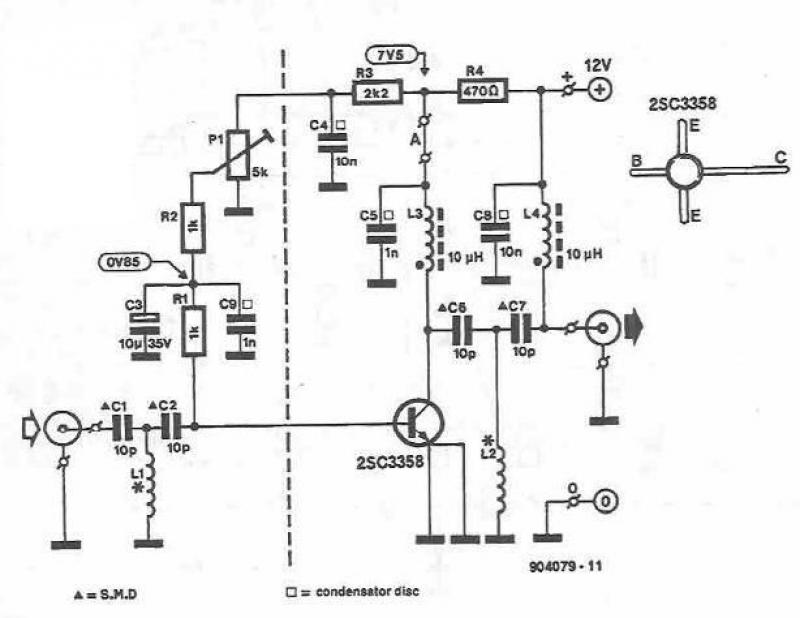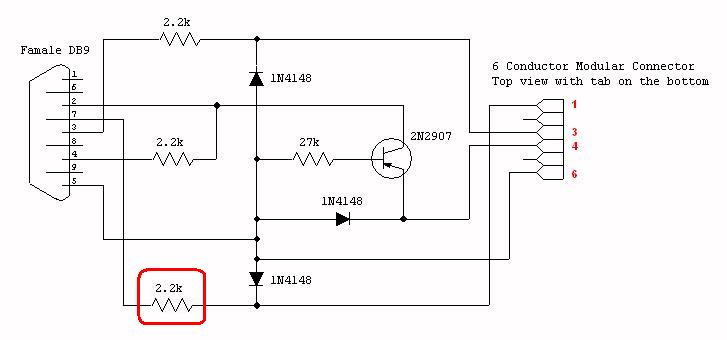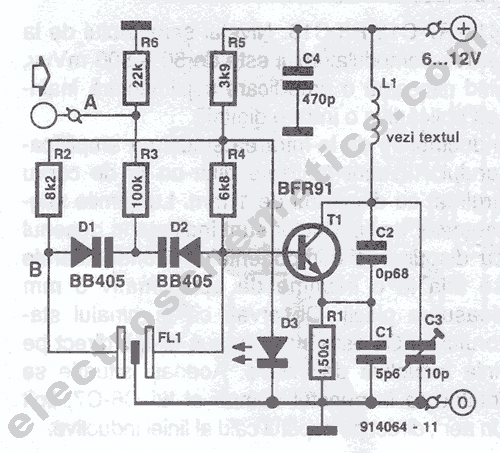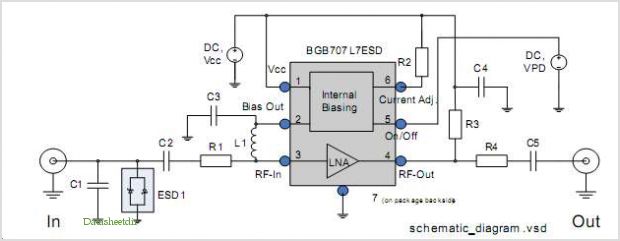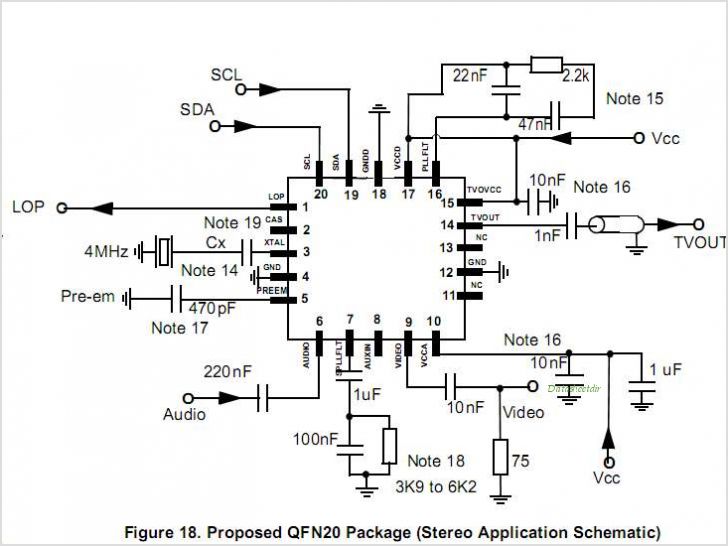
optimized 6 element uhf yagi antenna
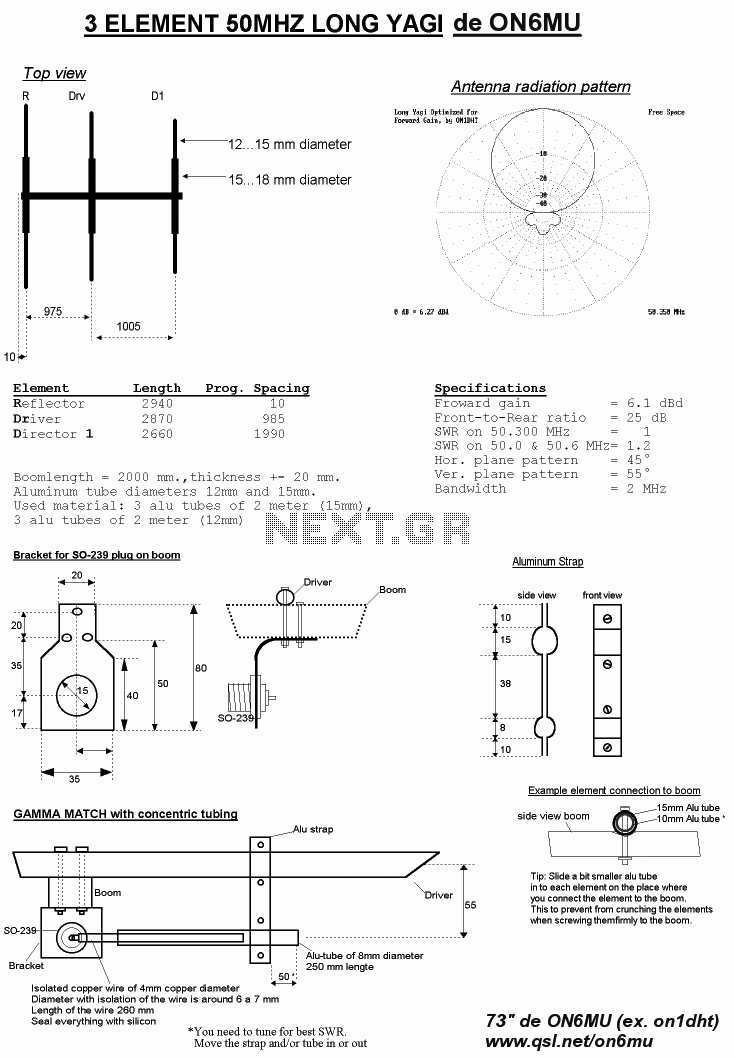
The diameter of the antenna elements can range from 5.8 mm, while the dipole diameter can vary from 8 mm to 12 mm, with 12 mm being the recommended size. This adjustment can be made without altering the length or spacing of the components. All elements, except for the dipole, are electrically connected to the boom and can be mounted either on top of or through it.
The antenna design described involves a configuration where the elements are strategically arranged to optimize performance while maintaining flexibility in component sizing. The choice of element diameters, specifically the 5.8 mm for the antenna elements and the recommended 12 mm for the dipole, allows for a balance between structural integrity and electrical characteristics.
The boom serves as a central support structure, providing mechanical stability and facilitating the electrical connection of the elements. This configuration ensures that all elements, except the dipole, are grounded to the boom, which minimizes interference and enhances signal quality. The mounting options—either on top of or through the boom—offer versatility in installation, allowing for customization based on specific application requirements or environmental conditions.
In practice, this antenna design can be utilized in various applications, including amateur radio, television reception, and other communication systems. The ability to maintain the same length and spacing while varying the diameters of the elements simplifies the tuning process and reduces the need for extensive recalibration. This feature is particularly advantageous in field applications where quick adjustments are necessary.
Overall, the described antenna configuration presents a robust solution for achieving effective communication while allowing for adaptability in its physical design. The careful consideration of element size and mounting techniques contributes to the overall efficacy of the antenna system.The elements diameter of the antenna may vary between 5. 8mm and the dipole diameter may vary between 8. 12mm (12mm recommended) without the need of changing anything to the length or spacing. All elements except the dipole are electrically connected to the boom and may be mounted on top or through it.
The antenna design described involves a configuration where the elements are strategically arranged to optimize performance while maintaining flexibility in component sizing. The choice of element diameters, specifically the 5.8 mm for the antenna elements and the recommended 12 mm for the dipole, allows for a balance between structural integrity and electrical characteristics.
The boom serves as a central support structure, providing mechanical stability and facilitating the electrical connection of the elements. This configuration ensures that all elements, except the dipole, are grounded to the boom, which minimizes interference and enhances signal quality. The mounting options—either on top of or through the boom—offer versatility in installation, allowing for customization based on specific application requirements or environmental conditions.
In practice, this antenna design can be utilized in various applications, including amateur radio, television reception, and other communication systems. The ability to maintain the same length and spacing while varying the diameters of the elements simplifies the tuning process and reduces the need for extensive recalibration. This feature is particularly advantageous in field applications where quick adjustments are necessary.
Overall, the described antenna configuration presents a robust solution for achieving effective communication while allowing for adaptability in its physical design. The careful consideration of element size and mounting techniques contributes to the overall efficacy of the antenna system.The elements diameter of the antenna may vary between 5. 8mm and the dipole diameter may vary between 8. 12mm (12mm recommended) without the need of changing anything to the length or spacing. All elements except the dipole are electrically connected to the boom and may be mounted on top or through it.
